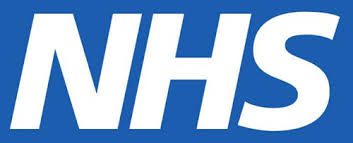Richard Stubbs, Chair of the Health Innovation Network, and Chief Executive of Health Innovation Yorkshire and Humber, explores the pivotal role that innovation plays in supporting the Government’s ambition to transform the NHS, and why a focus on the implementation of innovation is key.
The Government’s mandate to NHS England, published on 30 January 2025, outlined the bold ambitions to transform the NHS and improve patient care, with an immediate focus on cutting waiting lists and driving productivity. This was shortly followed by NHS England’s Planning Guidance for 2025/26.
The guidance, which sets out much fewer national priorities this time – 18 headline targets, compared to 31 last year and 133 in 2022/23 (NHS Confederation) – equally set cutting waiting lists as the main priority for the health service.
In order to deliver this mandate, innovations will need to be implemented safely and at scale in key NHS services in every community; in the words of the Secretary of State, Wes Streeting, we will need to “take the best of the NHS to the rest of the NHS”.
This is not an “invention” challenge. We already have an NHS pipeline of proven, evidence based innovations, currently supported by the Health Innovation Network, that, if implemented more widely, could have a national impact on reducing waiting lists and increasing NHS capacity as well as improving patient outcomes.
Improving diagnostics
Inappropriate referrals and patient deterioration while waiting for treatment negatively impacting efforts to reduce waiting lists. But there are numerous AI and digital innovations that can increase capacity and efficiency by improving diagnostics and supporting people to manage their conditions, and ‘wait well’.
One example we have supported across the Network, is Brainomix. They have demonstrated a 50% increase in thrombectomy rates with a 1-hour time saving to treatment, crucial to stroke outcomes.
Similarly, C The Signs, an integrated clinical decision-support system that assists healthcare professionals to spot cancer at an earlier stage when survival rates are highest, has been used across in England, with over 100,000 risk assessment undertaken, leading to 7,000 earlier cancer diagnoses.
Risk Stratifying patients in most need
An important technological development in cutting waiting lists is the ability to support clinicians to prioritise those patients on the list who are most at risk of a severe or adverse event as a result of delayed treatment or diagnosis.
Supported by Health Innovation North West Coast, Cheshire & Merseyside ICS was the first to implement C2-Ai’s Patient Tracking List triage system across the system. This resulted in saving 125 excess bed-days per 1,000 patients on the Patient Tracking List, due to less harm being caused and fewer unplanned admissions. There was also up to 15 minutes consultant administrative time saved per patient per triage, which can be used for clinical duties; as well as a 27% reduction in 52-week waiters during the first six weeks of deployment.
Innovations like CDRC and Eclipse Live support GPs to prioritise the highest risk patients based on existing practice data, driving significant improvements in CVD diagnosis, including an 8-15% increase in Atrial Fibrillation, Chronic Kidney Disease and hypertension diagnosis rates.
Moving care out of hospitals
Innovation can transform high volume care pathways (Long term conditions, Frailty, Cancer) at scale through enabling diagnostics, monitoring, self-management and treatment in other care settings or at home.
Innovations like Isla Health facilitate clinical decision making through better patient data management, allowing providers to shift activity to remote monitoring and removing 1000s of patients from waiting lists.
Luscii remote patient monitoring was found to have the potential to reduce re-admissions by up to 25% in one North West London pilot, while EkoDuo, a digital stethoscope with the ability to run the same assessment as a 12-lead ECG, was able to divert 90% of patients into the community pathway instead of hospital, and had the potential to save the equivalent of 246 life years.
As well as cutting waiting lists, remote monitoring can also lead to huge fiscal gains; innovations like Surgery Hero and Remcare which help to monitor and prepare patients for surgery at home, reduce costs per patient by up to £273 for some procedures, with a return on investment of £7 for every £1 spent.
Shifting from treatment to prevention
Whilst cutting waiting lists through increased efficiencies remains an immediate priority, preventing their growth through reducing overall demand in the first place must be a vital component of any long-term strategy.
CVDACTION, a smart data tool that supports GPs to prevent heart attacks and strokes at scale using data integrated from around 85 searches, is currently being trialled across a population of 800,000 in London and Yorkshire, with over 600 PCNs are using UCLP’s Proactive Care Frameworks to identify hypertensive patients and proactively treat them to target.
Our national lipid management programme increased the total proportion of people with known CVD treated to NICE-recommended thresholds from 23.7% to 27.8% and may have prevented over 9000 heart attacks.
Supporting patients to wait well
In addition to improving diagnostics, ensuring highest risk patients can access care most quickly, moving care out of hospitals and into the community and focusing on prevention, technology can also support the management of waiting lists by helping patients to “wait well”. For example, innovations Sleepio and SleepStation are alleviating waiting list pressures for insomnia, with significant reductions in medicines prescription (56-62%), work absence (21%) and anxiety symptoms (68-70%) reported by patients, who can self-refer.
Equally, innovations like MySunrise and MyMHealth are empowering adults and children and young people (CYP) to manage their own physical health conditions, which is vital for preventing deterioration while waiting.
Improving patient safety
Patient Safety is about reducing avoidable harm to patients, and should not be overlooked in the effort to tackling waiting lists.
The (MedSIP) led by the National Patient Safety Team and delivered by Health Innovation Network-hosted Patient Safety Collaboratives (PSCs) aimed to address the most important causes of severe harm associated with medicines. The programme brought the science of continuous safety improvement to safety culture, safety systems and high-risk medicines in common use. It prevented 4676 significant harms from medicines, saving 518 lives.
Our work in maternity and neonatal has saved 1198 babies’ lives and prevented 463 cases of cerebral palsy, saving the health and social care system £463m in costs avoided. Premature birth is the main cause of brain injury and cerebral palsy in babies. Evidence shows that babies can be protected from brain injury by giving magnesium sulfate to women who are at risk of premature birth. This reduces the risk of cerebral palsy by a third. The prevention of cerebral palsy in pre-term labour (PReCePT) programme aimed to support all maternity units in England to increase the use of magnesium sulfate in premature births. The PReCePT approach was developed in the West of England, led by Health Innovation West of England, and University Hospitals Bristol and Weston NHS Foundation Trust. It was then piloted in five NHS trusts in the region and rolled out across England via the Health Innovation Network as a national programme.
Our managing deterioration programme prevented up to 44969 emergency admissions, and our work supporting increased structured medicine reviews in care homes has been shown to reduce the number of medicines a person takes by around 20%, increased medication adherence, and delivered a 40% reduction in Emergency Department attendances.
Focusing on implementation
All these examples highlight the pivotal role that innovation can play in supporting the NHS and Government to deliver cuts to waiting lists and operation efficiencies. We need to shift from a culture of invention to a culture of adoption where the NHS is resourced to “steal with pride” the best of our innovative pathway transformations. We cannot afford, in time or funding, to be re-inventing solutions in silos.
Innovation adoption requires a pathway, not product, approach, a substantial investment, a focus on workforce sustainability, careful management of digital and technological changes, and a concerted effort to address health inequalities to deliver meaningful change. The Health Innovation Network is currently supporting the NHS workforce, industry from start-ups to multinationals and academia in every part of England. Get in touch today if we can support a transformation project in your local area.

Grace Gimson is the founder and CEO of Holly Health, a digital platform dedicated to transforming healthcare through preventive and person-centered digital health coaching. The platform aims to support individuals struggling with mental or physical health. Grace is a generalist with a background in operations, business leadership, and scaling tech startups such as Deliveroo. [...]

HN (Health Navigator) is an AI-powered health innovation that enables preventative care through predictive analytics. Founded in Sweden by Dr Joachim Werr, a former A&E consultant, HN is now supporting healthcare systems across the UK to identify high-risk patients before they reach crisis point. Joachim shares the journey behind HN and the transformative impact of [...]

The government has set out three shifts it wants to see happen: treatment to prevention, hospital to community, analogue to digital. HealthTech has a crucial role in supporting the delivery of all three. But using technology to help deliver these changes requires procuring the technology, and when all the noise is about there being no [...]






